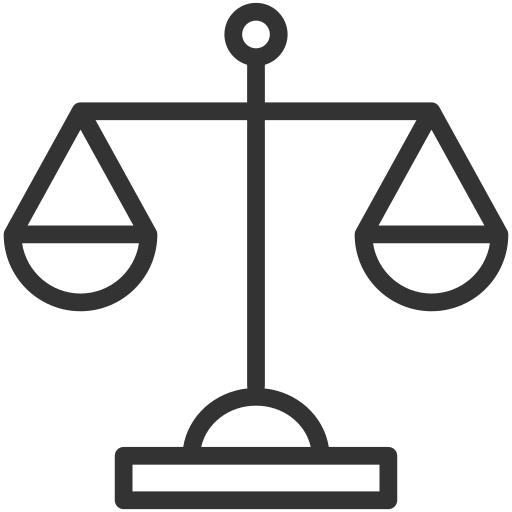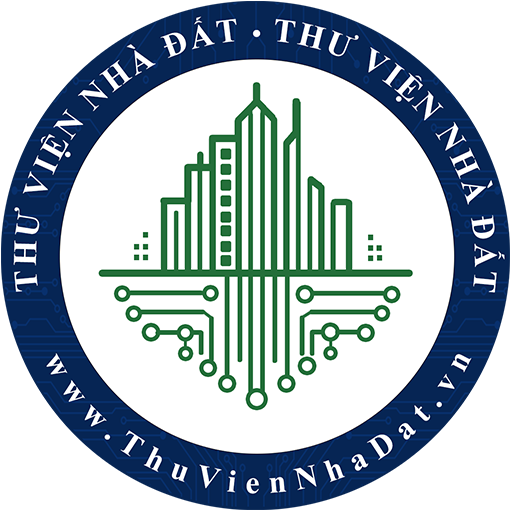|
THE CENTRAL COMMITTEE |
THE COMMUNIST PARTY OF VIETNAM |
|
No. 23-NQ/TW |
Hanoi, March 22, 2018 |
The Communist Party and State have promulgated and directed the implementation of multiple policies, significantly contributing to national industrial development. Industry serves as an important economic sector and has been the largest contributor to the state budget in recent years, becoming a key export sector with high growth rate. Structure of industries has shown considerable changes. Some industries such as electricity, electronics, information technology and telecommunications, energy equipment manufacturing, textile, footwear and construction have developed rapidly, thereby making a positive contribution to generating employment, restructuring labor, increasing productivity and improving people’s lives.
However, the national industry has developed in a manner that fails to satisfy requirements for industrialization and modernization. It has developed mainly according to short term targets and there is a lack of sustainability. The internal force of the industry remains weak and depends heavily on foreign invested enterprises. Technologies remain obsolete. Products and labor productivity of the industry are still low. The industry has not yet been closely associated with other economic sectors. Too much attention is paid to cheap labor and the advantages of golden population structure are yet to be optimized.
Performance of most state-owned industrial enterprises remains low and multiple large-scale industrial projects suffer from losses. Most of the domestic private industrial enterprises are small and medium-sized enterprises. The restructuring of industries is still slow. The competitiveness and capacity to participate in regional and global value chains remain limited, industrial production mainly focuses on outsourcing and assembly, and the added value is low. A key industry that plays a leading role is not available. Multiple target industries fail to reach meet the set targets. Supporting industry has been underdeveloped and the localization rate of industries remains low. Environmental pollution caused by industrial development has become more and more serious.
There are quite a few reasons for the abovementioned limitations and weaknesses, however, subjective reasons prevail. Some executive committee of the Communist Party, governmental authority, enterprise and community fail to have full awareness of the national industrial policy. The awareness is affected by local interest, group interest and term thinking. General awareness and united action in the entire political system fail to be developed.
The leadership, direction and inspection by multiple executive committees remain passive and slack. The thinking on and approach to the development and implementation of the national industrial development policy are still affected by the centralized planning and subsidy mechanism. The state management of some industries still overlaps and shows weaknesses. The productivity, quality and efficiency of investment in industry has not yet been well managed and supervised.
The Communist Party and State’s policies on industrial development lack uniformity. A special resolution on the national industrial development policy from time to time is not available. The national industrial development policy contains quite a few contents that are not close to reality and inappropriate, and not closely associated with the country's overall socio-economic development strategy, planning and plan, and national advantages. The state-owned enterprises’ role in the implementation of industrial development strategy has not been properly defined. There is a lack of proper policies to enhance the capacity of private industrial enterprises. A truly favorable, transparent, stable and competitive business environment has not yet been created. Less attention is paid to the development of target and key industries. The supporting industry development policy lacks uniformity and feasibility.
The policy on mobilization, allocation and use of sources for industrial development is ineffective and fails to achieve any breakthrough. The policy on development of human resources for the industry is not specifically targeted and fails to satisfy requirements. The science and technology policy has not yet provided main motivation for rapid and sustainable industry development. The FDI policy constitutes slow improvement.
- Be fully aware of, respect and follow objective rules of the market economy in accordance with Vietnam’s developmental conditions, develop comprehensive power of the political system, resolutely combat against wilful, bureaucratic and subsidized manifestations in the process of formulating and implementing the national industrial policy, and selectively inherit the world’s industrial achievements and industrialization experience.
- The national industrial policy plays an important part in the national development strategy and policy and is closely associated with policies on development of other economic sectors, especially policies on national trade, finance and currency, science, technology, training, environmental protection and climate change resilience. Ensure a close association between the planning for development of industries with the comprehensive industry strategy, between the strategy and planning for development of industries and strategy and planning for development of other economic sectors so as to form industrial areas, industrial clusters, industrial parks, production networks and industrial value chains among which industrial clusters are targeted.
- Develop industry both in breadth and depth with a focus on breadth, and make a breakthrough in increasing productivity, quality and competitiveness of industrial products. Take full advantage of Vietnam’s golden population structure and exploit technologies of the 4th Industrial Revolution and trade advantages in order to rapidly and deeply develop some fundamental, strategic and competitive industries. Consider the development of information technology and electronics, development of processing and manufacturing industry, and development of smart manufacturing industry as the main way, center and breakthrough respectively. Focus should be given to the development of green industry development.
- Science and technology, education and training serves as a key role and breakthrough in the national industrial policy. Gain advantages of a country going behind in industrialization, especially the 4th Industrial Revolution to have a rational approach and gain a head start by taking a shortcut to the development of industries. Target industries should be objectively selected according to strict principles and criteria, in conformity with each stage of industrialization and in a manner that realizes the country's full potential.
- The state should serve a role in orienting, establishing and improving the institution for industry development and create a favorable, stable, transparent, competitive and healthy business environment. The market should play a key role in effective mobilization and allocation of resources and provide primary motivation for releasing industrial productive forces.
- Develop defense and security industry following the direction of dual-use, and becoming key in the national industry; enhance the potentials, take full advantage of and develop the linkage between the national defense and security industry and the industry serving the people’s life.
1- Overall targets
- By 2030, Vietnam will meet its industrialization and modernization target, basically becoming a modernity-oriented industrialized country among the top three ASEAN countries in industry, with some of its industries being globally competitive and deeply participating in the global value chain.
- By 2045, Vietnam will become a modern and industrialized country.
2- Specific targets to be reached by 2030
- The industry is expected to account for over 40% of GDP, with manufacturing and processing industries accounting for around 30% and manufacturing industry alone accounting for over 20%.
- The value proportion of hi-tech products from the processing and manufacturing industry will reach at least 45%.
- The industrial growth rate of industrial added value will average over 8.5%, of which the processing and manufacturing industry will reach over 10% per year.
- The average annual growth rate of labor productivity of the industry will be 7.5%.
- The Competitive Industrial Performance (CIP) Index will be among the top three ASEAN countries.
- The proportion of labor in the industrial and service sectors will exceed 70%.
- A number of large-scale, multinational and globally competitive industrial clusters and industrial enterprises will be built.
III- ORIENTATION TOWARDS FORMULATION OF NATIONAL INDUSTRIAL DEVELOPMENT POLICY
1- Policy on spatial distribution and industrial restructuring
- Distribute industrial space to meet the requirements for restructuring industries and developing economic sectors in each region in the direction of concentration and not spreading evenly according to administrative boundaries, ensuring environmental protection, national defense and security. Adopt policies to promote the shift of industries heavily depending on natural resources and labor and adversely impacting the environment to hi-tech and environmentally friendly ones. Combat against wilfulness and local interest upon distribution of industrial space.
- Establish specific criteria, conditions and mechanisms to identify and develop industrial clusters in a targeted manner, especially in regions where industrial clusters have initially been formed or where advantages in transport infrastructure, geo-economics, natural resources, labor and logistics are available or which potentially have motivation for growth. Implement mechanisms and policies on pilot construction of industrial clusters for a number of products of target industries according to competitive advantages, specialization and value chain.
The State’s policies on provision of assistance in development of industrial clusters will focus on creating a favorable business environment, building infrastructure facilities, and encouraging all economic sectors to take part in development of industrial clusters. Criteria and methods will be adopted to evaluate the performance of industrial clusters, industrial parks and hi-tech parks.
- Formulate mechanisms and policies to promote the internal restructuring of the industry towards higher added value and smartness level. Accelerate the integration of information technology and automation in industrial manufacturing in order to create smart production processes and smart factory models and develop smart products and devices. Develop and introduce smart technology standards and production techniques.
2- Policy on development of target industries
- Select some target industries according to the results of objective analysis of the country’s advantages. A selected industry must be the one that is able to be deeply involved in the global production network and value chain, has a fundamental significance and a high spill-over effect, uses clean and environmentally friendly technologies, and is able to create high added value. Some labor-intensive industries in which Vietnam still has advantages will be also prioritized. Target industries must be determined in a flexible manner. It is required to carry out periodic assessment of their performance according to criteria so that appropriate adjustments can be made.
- By 2030, give priority to some industries such as information technology and telecommunications and electronics that will be developed at the world’s advanced level and in compliance with the requirements of the 4th Industrial Revolution in order to create a digital technological platform for other industries; clean energy, renewable energy and smart energy industries; and processing and manufacturing industry that serve agriculture in accordance with international standards. Prioritize defense and security industry that will be developed in association with the industry serving the people’s life by following the direction of dual-use. Keep developing textile and garment and footwear industries but giving focus on stages of creating high added value in association with smart and automated manufacturing processes. Prioritize some engineering industries such as automobile, agricultural machinery, construction equipment, industrial equipment, electrical equipment and medical equipment.
- For the period 2030-2045, prioritize new generations of the information technology and telecommunications industry, and adoption of digital technology, automation, high-end equipment, new materials and biotechnology.
- Implement the State’s assistance policies tailored for target industries according to market mechanism and Clauses of international commitments signed by Vietnam. The policy must cover a specific period (5 years on average but not exceeding 10 years). State investment in target industries will mainly serve a role in supporting and encouraging the private sector participation. It is recommended to avoid selecting too many priority industries to ensure an adequate number of necessary resources.
3- Policy to create a business environment conducive to industrial development
- Implement policies to ensure macroeconomic stability to facilitate investment attraction and industrial development. Improve financial, monetary and tax policies to support and promote industrial development. Accelerate the financial market restructuring and ensure a rational structure between the money market and capital market. Develop securities market into an important channel for raising medium- and long-term capital for industrial development. Adopt policies to support industrial enterprises eligible to issue stocks and bonds and list them on the domestic and international securities markets.
Implement a flexible exchange rate policy with the aim of boosting and supporting the export of target industrial products of the country. Create special mechanisms for expanding credit and encouraging investment in high-value industrial fields, target industries, hi-tech industries and supporting industries. Improve credit policies according to the production network and industrial manufacturing value chain and grant loans according to efficiency of investment projects. Develop an effective operation mechanism for venture capital funds.
Grant tax reduction and exemption at reasonable levels and over appropriate periods to target industries and smart industries Accelerate connectivity between the tax administration and customs and among relevant agencies under the national and ASEAN single-window system. Complete regulations on fighting against transfer pricing and tax evasion in conformity with international practices.
Increase the capacity for access to finance and credit (including foreign loans) by industrial enterprises, especially small and medium-sized industrial enterprises and startups. Remove all barriers and inequalities in the access to finance and credit by industrial enterprises of all economic sectors.
- Reorganize industrial product market. Speed up the implementation of the market price mechanism according to a roadmap with regard to essential commodities (such as petrol, coal, electricity, water, etc.). Prepare and implement appropriate technical regulations and standards in the industry to protect domestic production and consumers. Provide guidance and take appropriate measures to assist industrial enterprises in effectively participating in the signed FTAs. Lift barriers and suppress monopoly and unfair competition practices. Develop modern trading types and methods. Design and execute the national trade promotion program for industrial products.
Diversify raw material and equipment import markets to serve industrial development and avoid dependence on some existing markets. Strengthen inspection of quality of imported industrial goods and create technical barriers to reasonably protect the domestic market in conformity with international commitments and practices.
Enhance the quality of and effectiveness in market inspection and control. Step up the fight against smuggling, trade frauds, counterfeit goods and infringements of intellectual property rights in the industry field to ensure a healthy production and business environment.
- Develop a policy to make a breakthrough in startup in the industry field. Uniformly execute national startup assistance projects and programs.
4- Policy on development of industrial enterprises
- Step up the reorganization and renewal of state-owned enterprises in the industrial field by effectively implementing the Resolution No.12-NQ/TW dated June 03, 2017 of the 12th Central Committee. The State will only hold controlling shares of enterprises involved in economically important industries associated with national defense and security. Adopt policies to encourage and support the formation of large and multi-owner economic groups in the industry field, which are capable of competing in the regional and world markets.
- Develop domestic private industrial enterprises into a true driving force for national industrial development by effectively implementing the Resolution No. 10-NQ/TW dated June 03, 2017 of the 12th Central Committee. Pay attention to tailoring policies to increase the technological capability and governance capability for domestic industrial enterprises. Adopt policies to encourage and support the formation of large economic groups and sole proprietorships in the industry field.
- Encourage the development of small and medium-sized industrial enterprises and supporting enterprises of all economic sectors. Form and develop a system of industrial development consulting service providers. Establish criteria for selecting and developing supporting industries with a focus on the weak phases of the product value chain or stages that define the quality and value of industrial products. Assist in the development of suppliers for target industries and regard this as the core of the supporting industry development policy.
- Renew the policy on and speed up the attraction of foreign direct investment (FDI) in industry, particularly the processing and manufacturing industry. Change the policy on attraction of foreign direct investment (FDI) in industry from quantity to quality and in a targeted manner. The orientations for the selection and encouragement of FDI projects in various industries by 2030 are to prioritize projects using “high, new, clean and economical” technologies, using lots of domestically manufactured materials and components, having a high ratio of spending on domestic scientific and technological research and development, and showing a commitment to technology transfer and on-the-job training; prioritize joint venture and association agreements with domestic enterprises; prioritize multinationals with internationally recognized brands and high competitiveness, and foreign enterprises involved in the supporting industries.
Impose strict regulations on reporting of information by FDI enterprises to regulatory authorities to ensure national defense and security. Compile and publish a list of national industry investment projects and carry out investment promotion to attract high quality FDI. Consider building new models to attract FDI in industry.
5- Policy on development of human resources for the industry
- Consider and implement mechanisms and policies for development of human resources for the industry, meeting the industrialization and modernization requirements, especially the requirements of the 4th Industrial Revolution.
- Restructure, improve and increase the quality of training institutions to provide industry human resources that are able to control and receive new manufacturing technologies. Re-plan the network of vocational education institutions and higher education institutions involved in technology. Focus on developing a number of universities and vocational training institutions of technology in accordance with international standards. Step up private sector involvement in technology training. Provide training in science, technology, engineering and mathematics (STEM), foreign languages and information technology in general education curriculum. Encourage the private sector and enterprises to participate in the training of high quality human resources for the industry. Associate research and training with production and business as well as the industrial labor market demand.
- Improve mechanisms and policies for uniform development of the industrial labor market in terms of labor size and quality and structure of occupations. Formulate mechanisms and policies to orient the shift of labor, especially agricultural labor to industrial labor and rationally distribute workers in different regions.
- Review and revise policies to provide welfare to industrial workers, including salary, insurance and labor protection policies. Renew salary and wage policies according to the market principles and correspondence between with pay raise and labor productivity growth. Complete policies on houses and public welfare buildings for personnel with highly technical skills and workers in industrial parks, export-processing zones, industrial clusters and hi-tech parks. Adopt policies to attract and employ people with highly technical skills and innovative capacity, particularly foreign experts and Vietnamese overseas.
- Develop and enhance the role of Vietnamese entrepreneurs involved in the industry in the period of industrialization, modernization and international integration. Focus on the training of entrepreneurs that are required to be highly qualified, have modern management and administration skills, comply with the code of business ethics and have a sense of responsibility to the country and people.
- Focus on improving Vietnamese industrial workers' professionalism, discipline, capability to adopt and create new technologies, and performance. Such workers should be closely connected with the country and people.
6- Policy on science and technology for industrial development
- Make breakthroughs in infrastructure and application of information and communication technologies, particularly digital connection (4G and 5G) infrastructure to ensure the Internet connects people and connects everything. Formulate a national digital transformation strategy. Promote investment in big data centers and step up big data analysis, management and processing in order to create new products and knowledge. Enable the people and enterprises to grasp opportunities for developing digital content in an easy, convenient and equal manner. Formulate and implement the strategy for Vietnam’s access to and proactive participation in the 4th Industrial Revolution.
- Provide resources for continuing to execute the national technology innovation program by 2020, program on development of some hi-tech industries, and the national program on raising productivity and quality of Vietnamese enterprises’ products by 2020. Speed up execution of the project on application of technology to industry and trade restructuring by 2025 and with a vision to 2030.
- Uniformly develop science and technology market. Strengthen the protection and enforcement of intellectual property rights, particularly intellectual property in the digital age. Adopt proper policies to support and encourage organizations, individuals, research institutes, universities and enterprises to research, develop and transfer technology, and apply technological advances to production and business. Regard enterprises as an important force and center for science and technology development and application. Focus on increasing enterprises’ capability to exploit technologies.
Promote domestic and international cooperation in science and technology research, development and application, and sale and transfer of scientific and technological products. Speed up commercialization of scientific and technological research outcomes. Establish national database on technology and technology experts. Develop consultancy, evaluation, brokerage and pricing services for scientific and technological products. Promulgate mechanisms and policies to enhance cooperation and technology transfer between national defense and security industry and industry serving people’s life.
Adopt appropriate mechanisms and policies to orient and tightly control technologies according to the principle of combining the adoption of existing cutting-edge technologies and the gradualist approach so as to take full advantage of the “golden population structure” period and effectively expand the existing capacity. Strictly manage the import of industrial machinery, equipment and technologies to ensure quality and efficiency.
- Basically and uniformly renew financial management mechanisms tailored for organizations and science and technology activities, and methods for using state budget for science and technology activities. Promote public-private cooperation when executing technology innovation, research and development projects; develop the form of science and technology task assignment and purchase of research results by the state. Review and amend regulations to enable enterprises to establish a science and technology research, development and application fund capable of serving technology innovation. Adopt tax and financial assistance policies, and access appropriate resources with a view to encouraging technology research, innovation and modernization.
- Assist in building and developing science and technology enterprises involved in the industry, particularly in target industries. Adopt mechanisms and policies to encourage the development of technology and business incubators involved in key and priority industries.
- Intensify baseline geological surveys, prospecting, exploration and assessment of the natural resource reserves on the mainland and continental shelf of the country. Formulate strategies, planning and plans for the effective management, extraction and use of natural resources and minerals. Only allow the adoption of modern, economical and environmentally friendly mining and processing technologies to achieve sustainable socio-economic efficiency. Revise land policies and laws to enable industrial enterprises to have a convenient access thereto according to the market mechanism and planning.
- Integrate climate change resilience, natural disaster management and environmental protection requirements into all industrial development strategies, planning, plans, programs and projects. Introduce policies to promote investment projects using energy and natural resources in an economical manner and protecting the environment. Review and amend technical regulations on the environment applied to industries; assign responsibility for environmental protection to industrial establishments and impose strict penalties for violations. Formulate policies to encourage the development of the environmental industry and promote private sector involvement in environmental protection.
- Raise awareness of executive committees of the Communist Party and governmental authorities about the role and contents of the national industrial development policy in the cause of industrialization and modernization. Regard the formulation and organization of implementation of the national industrial development policy as one of the important issues concerning the leadership of executive committees of the Communist Party, local and governmental authorities. Attach industrial development targets and tasks with national socio-economic targets and tasks of each industry and level.
- Increase the efficiency in state management of industry. Restructure industrial management systems from central to local government to in a continuous and effective manner. Tasks should be clearly assigned. Clearly distinguish the state management and production management of the industry in a manner that conforms to the characteristics of the socialist-oriented market economy. Formulate a mechanism for close cooperation between ministries and local governments in making and implementing the national industrial policy; promptly take remedial actions against the inconsistency and ineffective implementation of regulations.
- Increase the participation of the Vietnamese Fatherland Front, socio-political organizations, socio-professional organizations and subjects of the policy in the process of making and supervising the implementation of the national industrial policy. Combat against group interest, cronism, corruption and wastefulness upon formulation and implementation of the national industrial development policy.
1- The Party Central Committee’s Commissions, Party Civil Affairs Committees, supervisory communist organizations, Party Committees of provinces and cities and Party Committees under Party Central Committee shall consider preparing a plan for implementation of this Resolution according to current condition of local governments and agencies, design action programs and plans for implementation of this Resolution according to a specific roadmap, add the targets mentioned in this Resolution to the annual plan of local governments and agencies, and carry out periodic inspection and assessment of the implementation of this Resolution.
2- The supervisory communist organization of the National Assembly direct the addition to the program on preparation of laws and ordinances, prioritize the preparation of bills directly serving the implementation of this Resolution; strengthen the supervision by the National Assembly, Standing Committee of the National Assembly, Ethnic Minorities Council and Committees of the National Assembly in terms of formulation and implementation of the national industrial policy.
3- The Party Civil Affairs Committee of the Government shall take charge of reviewing and consider amending or preparing the industrial development strategy and comprehensive planning for development of industries in accordance with this Resolution.
4- The Vietnamese Fatherland Front and socio-political organizations shall design programs and plans for supervising the implementation of this Resolution.
5- The Central Propaganda Commission shall take charge and cooperate with the Central Economic Commission in providing guidance and disseminating this Resolution and results of implementation thereof.
6- The Central Propaganda Commission shall take charge and cooperate with the Office of the Party Central Committee, Party Civil Affairs Committees and Party Committees under Party Central Committee in regularly supervising, inspecting and expediting the implementation of this Resolution , and carrying out periodic review and submitting reports to the Politburo and Secretariat./.
------------------------------------------------------------------------------------------------------
This translation is made by THƯ VIỆN PHÁP LUẬT, Ho Chi Minh City, Vietnam and
for reference purposes only. Its copyright is owned by THƯ VIỆN PHÁP LUẬT
and protected under Clause 2, Article 14 of the Law on Intellectual Property.Your comments are always welcomed



















